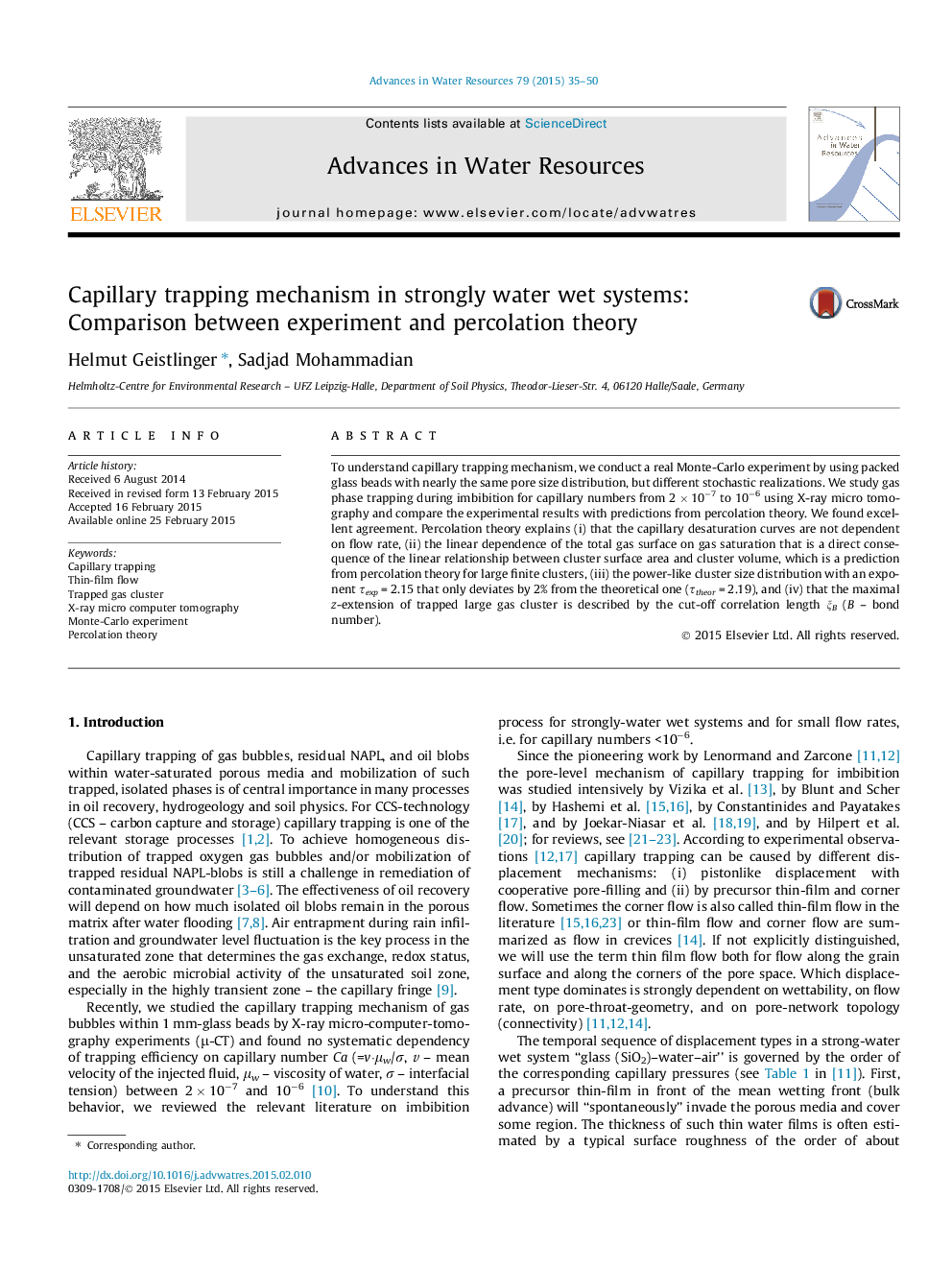| Article ID | Journal | Published Year | Pages | File Type |
|---|---|---|---|---|
| 4525432 | Advances in Water Resources | 2015 | 16 Pages |
•We studied capillary trapping in strongly water wet systems by μ-CT.•Percolation theory explains our key experimental results for Ca < 10−6.•Universal power law of the renormalized cluster-size distribution.•Flow rate independence of the trapping efficiency.•Impact of buoyancy on the maximal cluster size.
To understand capillary trapping mechanism, we conduct a real Monte-Carlo experiment by using packed glass beads with nearly the same pore size distribution, but different stochastic realizations. We study gas phase trapping during imbibition for capillary numbers from 2 × 10−7 to 10−6 using X-ray micro tomography and compare the experimental results with predictions from percolation theory. We found excellent agreement. Percolation theory explains (i) that the capillary desaturation curves are not dependent on flow rate, (ii) the linear dependence of the total gas surface on gas saturation that is a direct consequence of the linear relationship between cluster surface area and cluster volume, which is a prediction from percolation theory for large finite clusters, (iii) the power-like cluster size distribution with an exponent τexp = 2.15 that only deviates by 2% from the theoretical one (τtheor = 2.19), and (iv) that the maximal z-extension of trapped large gas cluster is described by the cut-off correlation length ξB (B – bond number).
